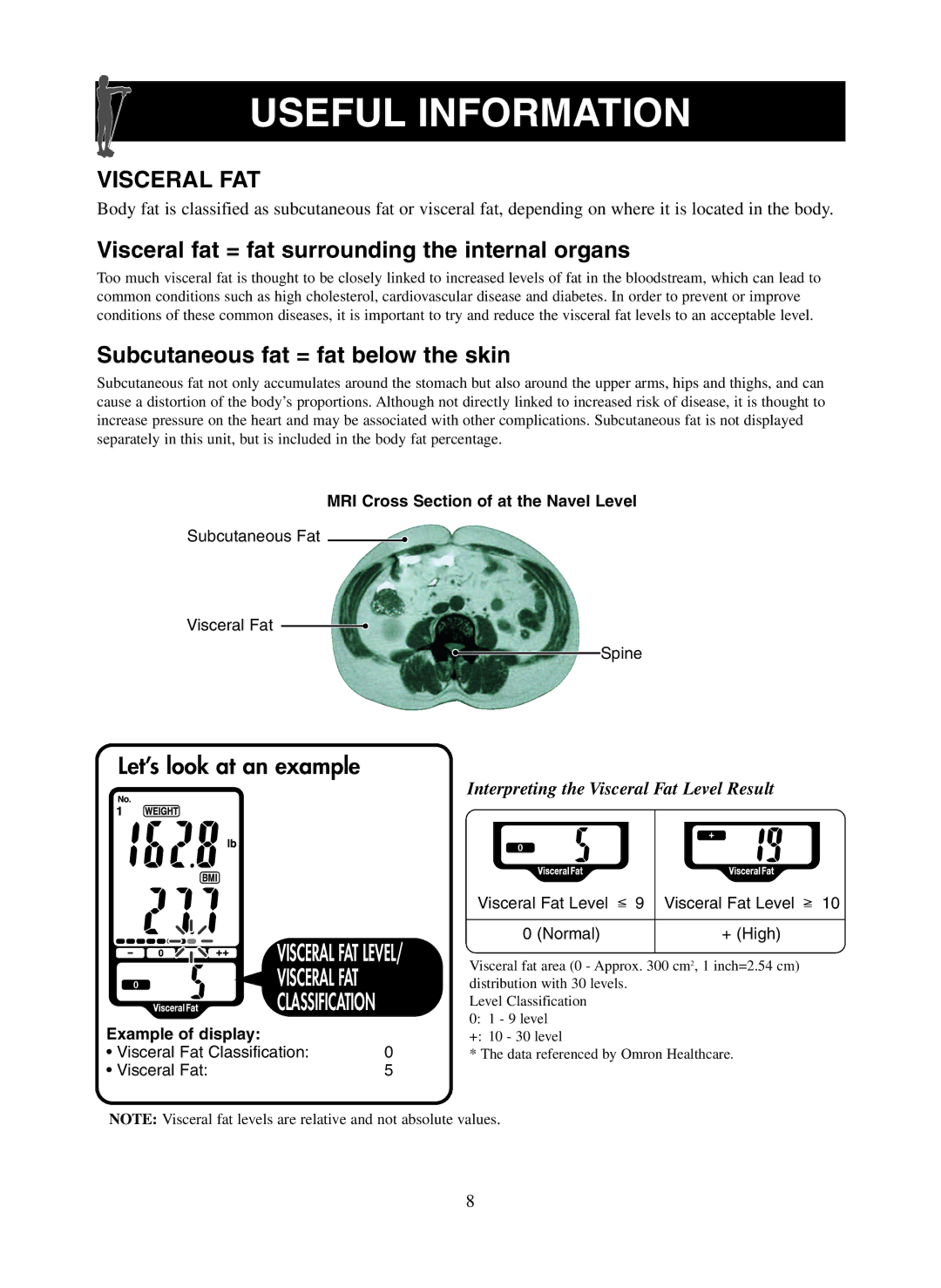
USEFUL INFORMATION
VISCERAL FAT
Body fat is classified as subcutaneous fat or visceral fat, depending on where it is located in the body.
Visceral fat = fat surrounding the internal organs
Too much visceral fat is thought to be closely linked to increased levels of fat in the bloodstream, which can lead to common conditions such as high cholesterol, cardiovascular disease and diabetes. In order to prevent or improve conditions of these common diseases, it is important to try and reduce the visceral fat levels to an acceptable level.
Subcutaneous fat = fat below the skin
Subcutaneous fat not only accumulates around the stomach but also around the upper arms, hips and thighs, and can cause a distortion of the body’s proportions. Although not directly linked to increased risk of disease, it is thought to increase pressure on the heart and may be associated with other complications. Subcutaneous fat is not displayed separately in this unit, but is included in the body fat percentage.
MRI Cross Section of at the Navel Level
Subcutaneous Fat ![]()
Visceral Fat
Spine
Let’s look at an example
Interpreting the Visceral Fat Level Result
VISCERAL FAT LEVEL/
VISCERAL FAT
CLASSIFICATION
Example of display: | 0 |
• Visceral Fat Classification: | |
• Visceral Fat: | 5 |
Visceral Fat Level | > | 9 | Visceral Fat Level > 10 |
0 (Normal) |
|
| + (High) |
Visceral fat area (0 - Approx. 300 cm2, 1 inch=2.54 cm) distribution with 30 levels.
Level Classification
0:1 - 9 level +: 10 - 30 level
* The data referenced by Omron Healthcare.
NOTE: Visceral fat levels are relative and not absolute values.
8
